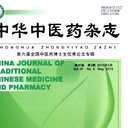Antioxidative and anti-inflammatory activities of paeoniflorin and oxypaeoniflora on AGEs-induced mesangial cell damage.
Słowa kluczowe
Abstrakcyjny
Paeonia suffruticosa, an important traditional herbal medicine, has been reported to prevent the pathogenesis of diabetic nephropathy through modulating advanced glycation end products-induced inflammatory and oxidative stress responses. However, little was known about the protective effect of the two major compounds in P. suffruticosa, paeoniflorin and oxypaeoniflora, on advanced glycation end products-induced mesangial cell damage. In the present study, we investigated the protective activities of paeoniflorin and oxypaeoniflora on advanced glycation end product-induced oxidative stress and inflammation in mesangial cells HBZY-1. The IC50 values of paeoniflorin and oxypaeoniflora for inhibiting 2,2'-azinobis-(3-thylbenzothiazoline-6-sulfonic acid) formation were 4.197 × 10-4 M and 1.002 × 10-4 M, respectively. The pretreatment with paeoniflorin and oxypaeoniflora (10-8-10-4 M) significantly increased advanced glycation end product-induced glutathione peroxidase and catalase activities. In the coculture system of HBZY-1 and macrophages, paeoniflorin and oxypaeoniflora could inhibit remarkably the migration of macrophages. Furthermore, paeniflorin and oxypaeniflora attenuated markedly advanced glycation end products-induced inflammation cytokines interleukin-6 and monocyte chemoattractant protein-1 levels in ELISA and western blot analysis in a dose-dependent manner. Taken together, our data provided the reliable evidence that paeniflorin and oxypaeniflora were able to attenuate advanced glycation end products-induced oxidative damage and inflammation in mesangial cells. Paeniflorin and oxypaeniflora might therefore have a beneficial effect in the treatment of diabetic nephropathy.


